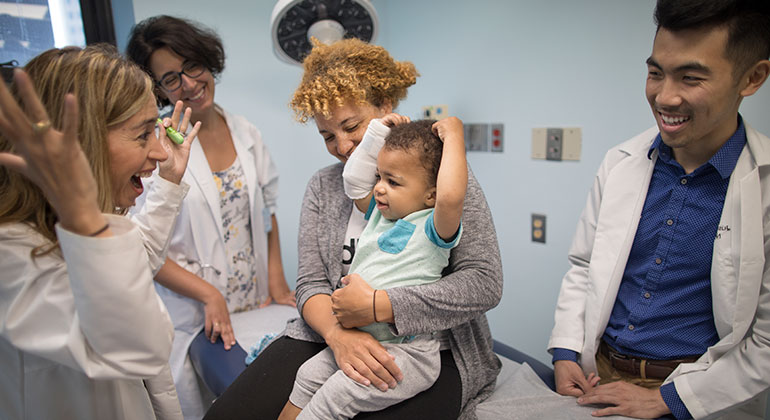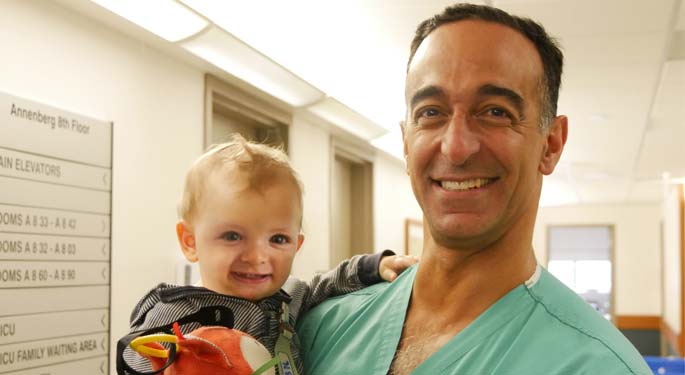Pediatric Epilepsy



Epilepsy is a neurological disorder that can result in episodes of brain-oriented disturbances such as loss of consciousness, involuntary muscle spasms and seizures of varying degrees. A seizure will occur when a section of the brain experiences an abnormal level of electrical activity in the brain.
There are two general categories of seizures: Generalized seizures affect both sides of the brain. The common types of generalized seizures are split into two categories – tonic-clonic (grand mal) and absence seizures (petit mal). Tonic-clonic seizures are marked by violent convulsions and extended periods of unconsciousness. Absence seizures are generally marked by instances of “blanking out” where the person might appear to lose and regain consciousness after several seconds. Both forms of generalized seizure can be treated with medications.
Seizures should be taken very seriously and can result in injury. One who is afflicted can fall due to the lack of consciousness and people who have tonic-clonic seizures will have uncontrollable spasms that can result in bodily harm due to falling onto a hard surface.
Children with chronic epilepsy may need neurosurgical treatment to remove the part of the brain that is causing the problem and to avoid any further permanent damage.
Under the leadership of Saadi Ghatan, MD, Director of Pediatric Neurosurgery, Mount Sinai neurosurgeons determine the causes of epilepsy and develop a personalized treatment plan to help your child.
Surgical Treatments for Pediatric Epilepsy
Temporal lobectomy, the most common procedure, involves removing the area of the brain responsible for the seizures. Often, this treatment helpspatients suffer far fewer seizures or become entirely seizure-free.
Vagal nerve stimulator decreases the severity and frequency of seizures. We place a small pacemaker in the child’s neck with wires passing around the vagus nerve, a large nerve in the neck. The pacemaker provides mild pulses of electricity, which are relayed to the brain along the vagus nerve to treat the seizures. This procedure does not involve operating on the brain itself.
Corpus callosotomy helps children with disabling atonic (drop attack) seizures. We partially sever the connection between the two sides of the brain (the corpus callosum) to keep seizures from spreading from one brain hemisphere to the other. The procedure has little effect on the rest of the brain.
Stereo electroencephalography (SEEG) lets us pinpoint the exact origin of your child’s seizures. Using state-of-the-art robotic technology, SEEG helps our surgeons delicately implant tiny electrodes into your child’s head. For the next few days, while your child is in the hospital we map how the seizures begin and spread. Once we have the information we need, we do a second minimally invasive procedure to remove the electrodes.
Cortical resection is the removal of a small area of the brain where seizures begin. We use brain mapping to be certain that we only remove the affected area, without compromising the patient’sfunction. We use non-invasive video information collected from earlier tests (such as non-invasive video electroencephalogram and seizure monitoring, magnetic resonance imaging, positron emission tomography, and SEEG) to pinpoint the precise spot in the brain that is responsible for the seizures. Then we can remove the site safely. We carefully test each spot to decrease side effects and improve the chances for a seizure-free life.
Laser ablation is helpful when the area causing the seizure is difficult to reach safely. We use a small laser, under live monitoring, to deactivate only the tissue causing the problem, preserving the important surrounding structures.
Responsive neurostimulation helps us place a brain pacemaker when the area causing the seizures includes a part of the brain that we cannot remove or deactivate. This device monitors the relevant area of the brain and, when it senses a seizure starting, can eliminate it before you experience any symptoms. This device “learns” together with you and your doctors and works better the longer it is in your brain.